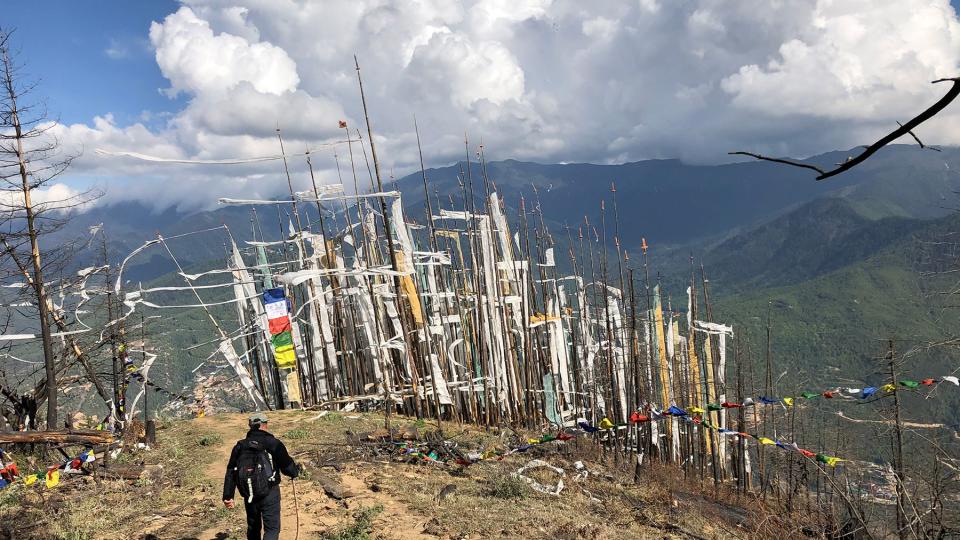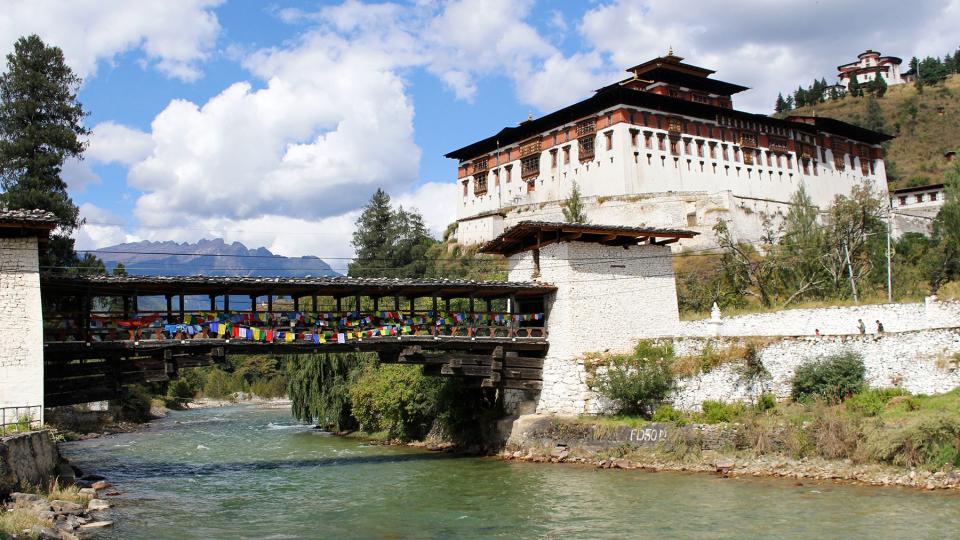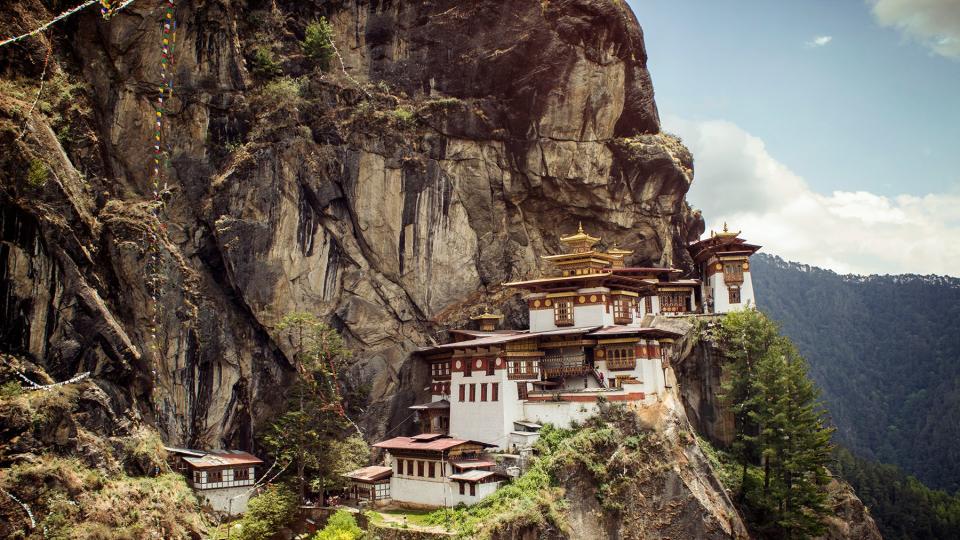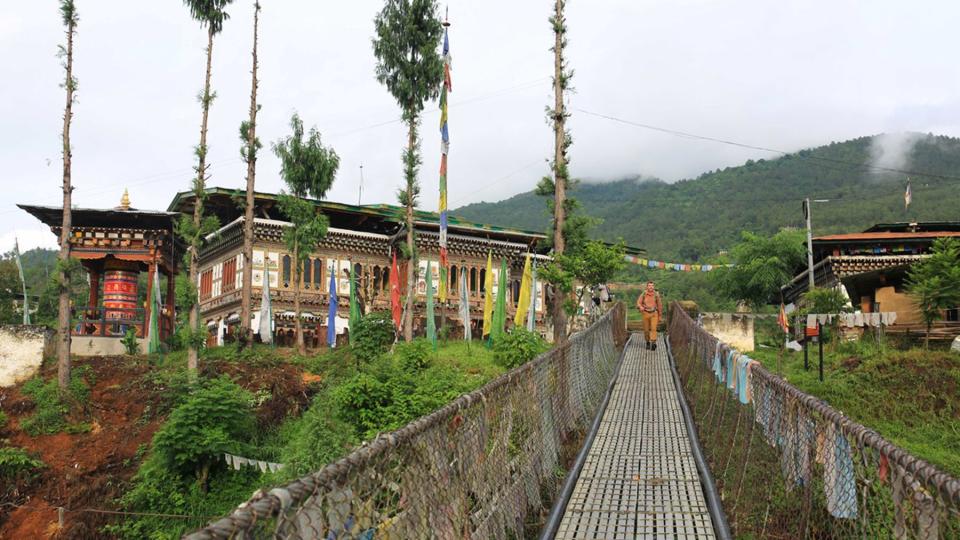This Sacred Hiking Trail in Bhutan Is Reopen After 60 Years — Here's How You Can Visit
The Trans Bhutan Trail is reopen for the first time since the 1960s.
Following two years of extensive restoration, the Kingdom of Bhutan reopened the 250-mile historic trail. G Adventures, the community-focused tour operator, was selected by the Bhutan Canada Foundation, the nonprofit that led the restoration, as the first group adventure operator to gain access.

Courtesy of G Adventures
According to a spokesperson for G Adventures, the tour company offers two new active trekking itineraries focusing on the trail: An 11-day Camp the Trans Bhutan Trail trip, which features camping and homestays; and a 12-day Highlights of the Trans Bhutan Trail itinerary with accommodation in homestays, locally owned guesthouses, and hotels.
"We're honored to be working with the Bhutan Canada Foundation and the Trans Bhutan Trail to launch the newly restored trail in magical Bhutan," Yves Marceau, vice president of product at G Adventures, shared in a statement. "It's a country we've run tours in for more than a decade and have long admired for its commitment to the happiness of its people and sustainable way of life, which are both philosophies that align with our values as an organization."

Courtesy of G Adventures
As Marceau explained, visiting the newly reopened trail is an ideal vacation in a socially distanced world, as people seek to both spend more time in nature and find unique experiences.
"Our new trips cover the highlights of the trail as hikers traverse forests and meadows and travel through rural settlements around the Dzongs," Marceau added. "Travelers can expect an average of three to four hours of hiking each day and delicious local meals each night, whether they are camping or staying in homestays, hotels, or local guest houses."

Courtesy of G Adventures
As for the trail itself, its origins date back thousands of years to when it was part of the ancient Silk Road. According to a spokesperson for G Adventures, records of the trail trace it back to the 16th century when it was the only route between the east and west of the country, serving as the pilgrimage route for Buddhists in the east to travel to sacred sites in western Bhutan and Tibet. However, when construction of the national highway began in the 1960s, the trail's stairways and footpaths gradually fell into disrepair. After years of work, it's now been restored to its former glory.
"As well as providing income opportunities for local people, especially youth, in rural communities, the restoration of the trail is a community-based project designed to preserve an ancient cultural icon and provide a sustainable experience for travelers," Sam Blyth, chair of the Bhutan Canada Foundation and lead donor for the Trans Bhutan Trail, explained. "Economic benefit will flow directly into the local communities as a result of community tourism, whether via homestays, the purchase of supplies locally for multi-day trips or the employment of local guides."

Courtesy of G Adventures
The two new G Adventures trips are available to book now, starting at $4,499 per person. See all the details and book your spot here.

